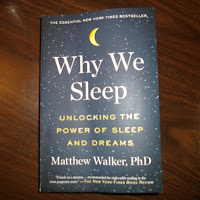I’m not a hoarder either in a clinical sense or in common
parlance. My closets don’t overflow with clothes and boxes; there is ample free
space in all of them. There is free space on every coffee table and end table
surface; on a few there is nothing but free space. There is nothing piled on
the floors of the house other than the carpets and furniture that should be
there. I have quite a few books, but they all fit on shelves; I discussed my
policy of limiting my library back in 2016 in Stacking the Stacks and maintain the same policy today. There aren’t
curios in my home beyond relatively few items that have sentimental value, e.g.
an oxen yoke made by my grandfather, a painting by my mom, war souvenirs from
my dad, etc. My mom was very anti-clutter. She voiced the dictum, “When in
doubt, throw it out” and she meant it. I keep more dubious things than she did,
it must be said, but I inculcated enough of her disposition to dispose that my
rooms, while not quite Spartan, are clutter-free.
There
are two exceptions on my property: exceptions not covered by TV/YouTube
decluttering gurus such as Mary Kondo. (Her “spark joy” test, which counts an
item as a keeper only if it specifically brings the owner happiness – a family
heirloom for example – nonetheless isn’t a bad one.) The exceptions are my barn
and the attic space over the garage. Both are crammed with construction materials. Most (not all, but most) of the items were stored there by
my father, who was a builder. He has been gone 21 years. (My mother has been
gone 20, at which time the property became mine.) Much of the stuff had been
transferred from the barn on my parents’ old property when they moved here in
1978. That previous barn was built in 1961, and at least some of the stored
materials in the current barn date to then. The stored materials include
mismatched screens, non-standard doors, mismatched pine trim, mismatched
shutters, PVC drain pipes, mismatched cabinets, 50-year-old locks, literally a
kitchen sink, backer board, aluminum gutters, mismatched windows, and much much
more. He stashed them on the “I might use that someday” principle.
Why I still have
them decades later is another question. The question has the same answers as from
those who cling to household clutter. Misplaced sentimentality and a reluctance
to let go of the past are two factors, but there is a bigger one. Denial of
death might not be the first motive that springs to mind but many psychologists
point to it. (The Pulitzer-winning The
Denial of Death by Ernst Becker, the landmark text of Terror Management
Theory, is worth a read, by the way, for its broader applicability.) “I might
use that someday” is a way of saying “I will be here to use it.” We probably
won’t be – or we wouldn’t be calling the stuff “clutter” in the first place. If
there is stuff in my barn for which neither my dad nor I have found use in 20,
40, or (in some cases) 60 years, it is highly unlikely I will use it in the
next 5, 10, 20, or whenever.
The Gentle Art of Swedish Death Cleaning by Swedish author and artist Margareta Magnusson faces the
issue head on. Magnusson describes herself as "between age 80 and
100." (This is her first book, which may encourage some late bloomer
authors out there.) She means what the title seems to mean: she keeps things of
genuine sentimental value (to her) and things that she actually uses, but as an
ongoing process she thins out other stuff that will just be a burden to heirs
one day. She says in a YouTube video about the book, “One day when you’re not
around anymore, your family would have to take care of all that stuff, and I
don’t think that’s fair.” I must admit to being more selfish than that.
Fairness to my heirs isn’t a big consideration for me. I like freedom from
clutter for its own sake – a point she mentions as well. The work benches in my
barn, for example, are far more useable without junk piled on top of them.
So a dumpster is
arriving Tuesday – and perhaps one after that. The bulk of what is stored in my
barn and attic will be gone for good. Not everything. I’m keeping the tools.
Also the lumber. I’ll definitely make use of at least some of it. As for the
rest, I might use that someday.
The
Cramps – Garbage Man








